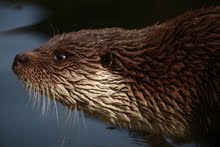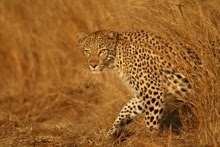I have always been interested in photography. I probably took my first bird photos as a ten year old (Laughing Dove, if I remember correctly), and had taken leopard, rhino and elephant photos within a few years of that.

I have spent much of the last seven years either in transition or in remote field sites where I have not wanted (or had the opportunity) to have fancy shmancy photographic equipment (digital cameras do not last long in the rainforest).
When I moved to Utila a few years ago, the beauty of the underwater environment really stirred my heart. And I could not help but want to get photographing again. Well, that, and the other reason was that I was working on Whale Sharks (Walhaai) at the time, and was interested in non-invasive means of individual identification (believe me, despite what some people may say, without a camera, they all look the same!). The trick with individual recognition involves capturing a flat side-on photo of the shark, focussed on the gill area (as with most sharks, they have five gill slits). Each sharks individual spot pattern can then be used as a means of fingerprinting the sharks we see. With the use of computer programmes designed by people way cleverer than I can comprehend, we are able to search for previous sightings of the same shark. One such programme that I loved, was I3S - this enabled me to build a database of all the whale sharks that had been seen in the waters around Utila, and to tell when we were getting resightings of the same individual.

Another system we used was that run by Ecocean. If you go here, you will see three photos of a shark named H-016 (the 16th whale shark identified from Honduras in the Ecocean database). The first image is the most useful: it is flat on (although a little high) and clearly shows the spot pattern on the shark's left side. The second photo is less useful as there is more angle on the photo. I included the third photo because it was pretty. Oh, and you can see his claspers (the two male sperm-transfer organs located under the pectoral fins).
This shark has been positively identified at least 11 times in the waters around Utila and is locally known as Big Jim after the late Jim Engel, owner and founder of the Whale Shark and Oceanic Research Center. One more thing, take a look at the range of information provided by observers: he was called a she twice, and size guestimates ranged from 4,5m to 9m! Needless to say, gauging whale shark size is incredibly difficult.
When not playin with Whale Sharks, I also liked to take photos and videos of the coral reef life (all underwater photos were taken with a Canon SD550).
Check out my youtube channel for more underwater videos, and my old whale shark blog for more shark tales.
And now to Austria...
Digiscoping birds
Despite a brief detoir underwater, my life has generally revolved around birds. Coming to Austria, I found a whole new community of species, most of which I had never before come across. This past Summer has been a wonderful learning curve, learning as much as I could about the birds of the Alps. And I have taken lots and lots of photos.
Initially, all of my bird photos were taken through my Swarovski binoculars with a hand-held point and shoot digital camera. Then I started using the snapshot adapter - what a lovely litte toy.
I have recently, however, started taking a lot of photos with a little Casio p&s (which will be retired to the realm of party photos soon) and a Swaro ATS 80 (which I absolutely adore). Almost all of the photos on this blog were taken with this setup (but sometimes with another, borrowed, Samsung p&s camera).

I tend to use a fixed 30x eyepiece - I like the extra field of view and having the zoom tempts me to crank it up more than I should. I also particularly enjoy having the swing arm which lets me quickly get the camera out of the way so that I can go for a quick identification. Oh, I see now that when I took the photo, I did not have the scope fitted to the extension arm. I usually use the balance arm to balance out the weight of the digiscoping setup evenly on the tripod head.

I have spent much of the last seven years either in transition or in remote field sites where I have not wanted (or had the opportunity) to have fancy shmancy photographic equipment (digital cameras do not last long in the rainforest).
When I moved to Utila a few years ago, the beauty of the underwater environment really stirred my heart. And I could not help but want to get photographing again. Well, that, and the other reason was that I was working on Whale Sharks (Walhaai) at the time, and was interested in non-invasive means of individual identification (believe me, despite what some people may say, without a camera, they all look the same!). The trick with individual recognition involves capturing a flat side-on photo of the shark, focussed on the gill area (as with most sharks, they have five gill slits). Each sharks individual spot pattern can then be used as a means of fingerprinting the sharks we see. With the use of computer programmes designed by people way cleverer than I can comprehend, we are able to search for previous sightings of the same shark. One such programme that I loved, was I3S - this enabled me to build a database of all the whale sharks that had been seen in the waters around Utila, and to tell when we were getting resightings of the same individual.

Another system we used was that run by Ecocean. If you go here, you will see three photos of a shark named H-016 (the 16th whale shark identified from Honduras in the Ecocean database). The first image is the most useful: it is flat on (although a little high) and clearly shows the spot pattern on the shark's left side. The second photo is less useful as there is more angle on the photo. I included the third photo because it was pretty. Oh, and you can see his claspers (the two male sperm-transfer organs located under the pectoral fins).
This shark has been positively identified at least 11 times in the waters around Utila and is locally known as Big Jim after the late Jim Engel, owner and founder of the Whale Shark and Oceanic Research Center. One more thing, take a look at the range of information provided by observers: he was called a she twice, and size guestimates ranged from 4,5m to 9m! Needless to say, gauging whale shark size is incredibly difficult.
When not playin with Whale Sharks, I also liked to take photos and videos of the coral reef life (all underwater photos were taken with a Canon SD550).
Check out my youtube channel for more underwater videos, and my old whale shark blog for more shark tales.
And now to Austria...
Digiscoping birds
Despite a brief detoir underwater, my life has generally revolved around birds. Coming to Austria, I found a whole new community of species, most of which I had never before come across. This past Summer has been a wonderful learning curve, learning as much as I could about the birds of the Alps. And I have taken lots and lots of photos.
Initially, all of my bird photos were taken through my Swarovski binoculars with a hand-held point and shoot digital camera. Then I started using the snapshot adapter - what a lovely litte toy.
I have recently, however, started taking a lot of photos with a little Casio p&s (which will be retired to the realm of party photos soon) and a Swaro ATS 80 (which I absolutely adore). Almost all of the photos on this blog were taken with this setup (but sometimes with another, borrowed, Samsung p&s camera).

I tend to use a fixed 30x eyepiece - I like the extra field of view and having the zoom tempts me to crank it up more than I should. I also particularly enjoy having the swing arm which lets me quickly get the camera out of the way so that I can go for a quick identification. Oh, I see now that when I took the photo, I did not have the scope fitted to the extension arm. I usually use the balance arm to balance out the weight of the digiscoping setup evenly on the tripod head.









.jpg)



.jpg)








.jpg)



No comments:
Post a Comment